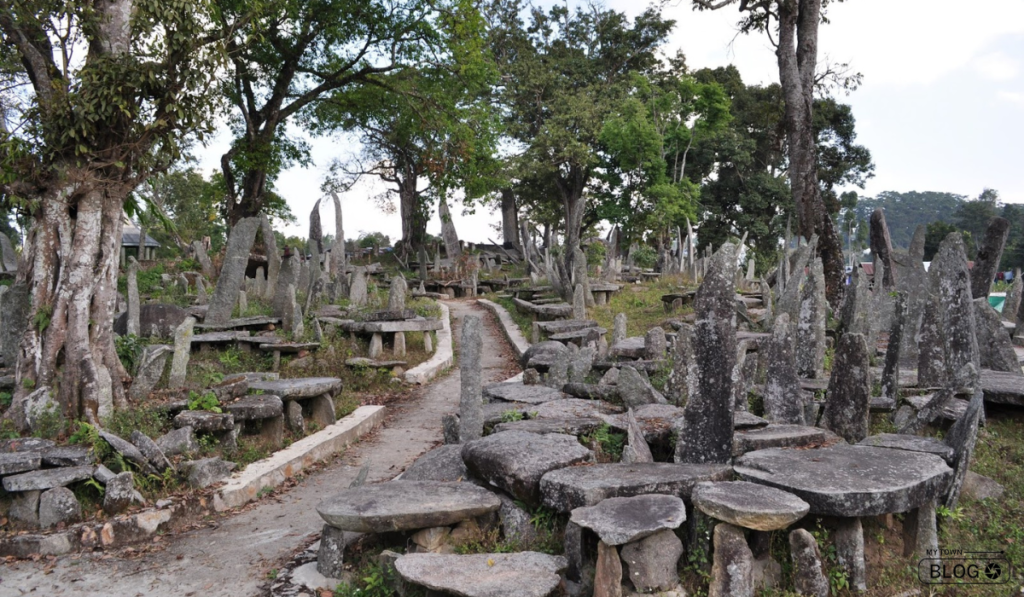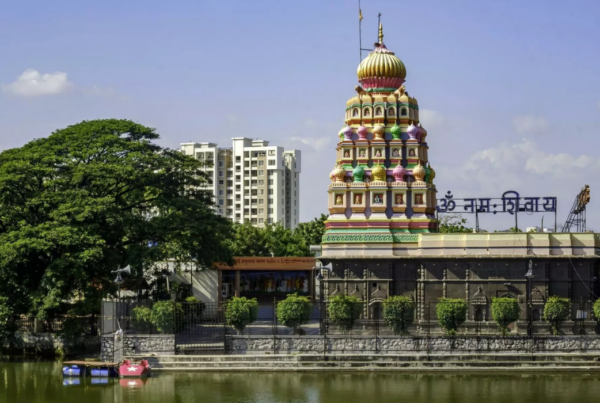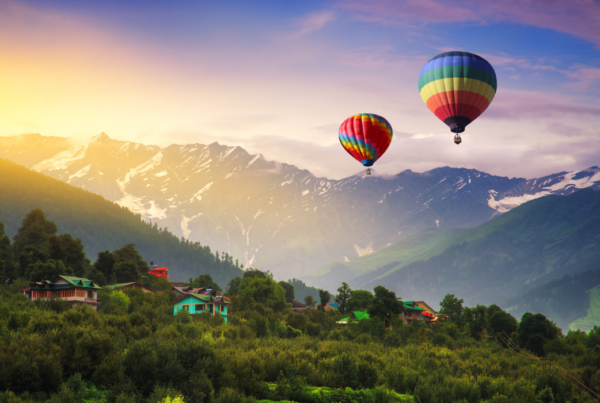Nestled in Northeast India, Meghalaya, the ‘abode of the clouds,’ boasts cultural diversity, picturesque landscapes, and natural wonders. Beyond its renowned beauty, the state harbors a rich historical heritage, featuring numerous monuments that bear witness to its fascinating past. If you’re a history enthusiast or eager to explore Meghalaya’s cultural tapestry, here are eight must-visit historical monuments in Meghalaya, each revealing a unique chapter in the region’s captivating history.
Megalithic Bridge on the Um-Nyankanah
Spanning the Um-Nyankanah River, this megalithic bridge is supported by massive stone pillars. Constructed during the medieval period under the orders of Jaintia Kings, these bridges served as vital trade routes, fostering communication and troop movement between ruling cities. Additionally, these architectural marvels stand as testament to the region’s rich history and engineering ingenuity. Protected by the Archaeological Survey of India (ASI), this stone bridge is a testament to Meghalaya’s historical connectivity.
Nartiang monoliths

Located in Jaintia Hills, the Nartiang Monoliths are among the tallest in the world. Erected to honor the Jaintia Kings, these monoliths consist of Menhirs (Moo Shynrang) and Dolmens (Moo Kynthai). Legends surround the tallest monolith, Moo Long Syiem, standing at 26 feet, commemorating a significant military achievement. With many monuments dedicated to the Pnar tribe’s royalty and leaders, Nartiang Monoliths offer a unique glimpse into Meghalaya’s history.
Kiang Nongbah Monument
Situated on the banks of the Myntdu River in Jowai’s Syntu Ksiar Valley, the Kiang Nongbah Monument pays homage to the courage of Jaintia King U Kiang Nangbah. A pivotal site in India’s Independence struggle, this historical monument invites exploration of nearby attractions like Syntu Ksiar, Tyrshi Falls, Ialong Park, and Thadlaskein Lake.
Megalithic Bridge, Known as Thul-Um-Wi
Thul-Um-Wi, another megalithic stone bridge, boasts a remarkable design with three gigantic spans over the Thul-Um-Wi River. Legend has it that this bridge was commissioned by the Jaintia king to facilitate trade and commerce with other cities under their rule, showcasing the importance of connectivity in Meghalaya’s history.
Stone Memorial of U-Maw Thodur-Briew, Nartiang
Dedicated to the local tribe U-Maw Thodur-Briew, this famous Meghalaya monument is constructed from large megalithic stones, including menhirs, dolmens, and cairns. Arranged in rows, these stones, towering at approximately 9 meters, provide a unique insight into the cultural and historical significance of the local tribes.
Manipur Memorial, Shillong

An octagonal monument built of ashlar stone masonry, Manipur Memorial is a tribute to Mr. Quinton and other British military officers who died in Manipur in CE 1891. With its engraved inscription detailing the officers’ demise, this monument is a poignant reminder of Meghalaya’s connection to broader historical events.
David Scott’s Monument, Cherrapunji
Commencing as an agent to the Governor-General on the North-East Frontier during the British period, David Scott is commemorated in Cherrapunji through an obelisk-shaped monument. The David Scott Trail, a popular trekking route, covers picturesque villages, streams, waterfalls, sacred grounds, and tribal villages, offering a unique experience in Meghalaya’s diverse landscape.
Conclusion
Historical Monuments in Meghalaya, from megalithic bridges to towering monoliths, offer a captivating journey into the state’s rich cultural and architectural heritage. Each site tells a unique story of the past, allowing you to witness architectural marvels and delve into historical significance. Beyond enchanting landscapes, these monuments silently see Meghalaya’s people’s resilience and creativity. Legends and stories add intrigue, making exploration a genuinely immersive experience. Discover mysteries and heritage in Meghalaya’s historical monuments, perfect for history enthusiasts and cultural explorers alike.
FAQs
Are these historical monuments easily accessible for tourists?
Tourists can access most of the mentioned historical monuments, and authorities have made efforts to preserve and protect them. However, checking the current status and any travel restrictions is advisable before planning a visit.
Do these historical sites offer guided tours?
Guided tours may be available for some monuments, giving visitors insights into their historical and cultural significance. Local guides can enhance your experience by sharing fascinating stories and details about each site.
Are these monuments family-friendly?
Yes, these historical monuments are generally family-friendly. Consider checking site details for restrictions, especially when with young children or elderly family members.
Can I take photographs of these monuments?
In most cases, authorities permit photography, but it’s crucial to adhere to any guidelines or restrictions they set. Some monuments may ban photography in specific areas.
What is the best time to visit Meghalaya for historical exploration?
The best time to visit Meghalaya, including its historical monuments, is during the dry season from October to April. The weather is pleasant, and you can explore the sites without heavy rainfall.
Are there entry fees for these historical monuments?
Nestled in Northeast India, Meghalaya, the ‘abode of the clouds,’ is not just known for its natural beauty; it also boasts a rich historical heritage. Explore eight must-visit historical monuments, each revealing a unique chapter in the region’s captivating history. Additionally, note that some sites may have entry fees, so it’s advisable to check with local authorities or visitor centers for the latest information.








